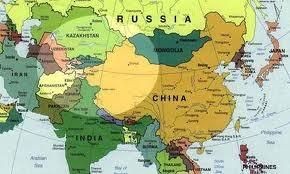BISHKEK (TCA) — Following the recent summit in China about the One Belt, One Road (OBOR) initiative, new plans are emerging showing a clear discomfort from several countries and some popular opposition from various local communities in countries involved in the Chinese plan. If stability and security remain the pre-condition for a successful implementation of any project the present situation of conflict and competition toward OBOR does not augur well (see One Belt, One Road: A plan for Chinese dominance and authoritarianism, TCA, 20 May 2017).
The old Silk Road, revisited and renamed several times, is a project that in its original concept was supported by the UNDP administration under the Silk Road Initiative (SRI) involving China and the Central Asian countries of Kazakhstan, Kyrgyzstan, Tajikistan, and Uzbekistan. From the Xian declaration of ten years ago many changes have taken place with setbacks and slowdowns in investments, with new initiatives showing different interests and dissatisfactions.
On May 31, at the St. Petersburg International Economic Forum, a conference on Developing Cooperation ‘from Lisbon to Vladivostok’ will be organized by the Roscongress Foundation. The project is an idea often announced by Putin and clearly in competition with the Chinese Silk Road initiative and the new OBOR, without having the necessary financial means and an attractive market support. The Russians are trying to enhance the role of the Eurasian Economic Union, while completely bypassing Central Asia and only making use of Russian infrastructure. Although with an attractive name, the idea is going to fail or simply duplicate the existing infrastructure already developed through the Russian Federation, with no benefit to Central Asian countries in terms of local investments, employment and new local production. Furthermore, the proposed project will pass for nearly two thirds in desolated area of Siberia and the Russian Far East transporting mainly raw material and making use of existing railways infrastructures with little impact and interest on the European side mostly attracted by the consumer goods and markets potentiality of China. Whatever the “Lisbon-Vladivostok initiative” may offer could easily be reached within the existing agreements and infrastructures without creating a new organization with a waste of money and energy. The project idea to facilitate trade sand cooperation between Europe and Eurasia is simply a political announcement since Europe and Russia already have suitable connection both for import and export, and should the proposed initiative aim to add additional facilities it can easily be achieved through bilateral or multilateral agreements. The real task is not to “re-invent” new useless initiatives but eliminate the present political barriers through appropriate diplomatic solutions, goodwill and better cooperation.
In the meantime, while the Russians try to promote their project, India and Japan are pursuing another initiative completely bypassing all Central Asian countries through a maritime route as an alternative to China’s OBOR (see India and Japan to launch their alternative to China’s Belt and Road initiative, TCA, 19 May 2017). This project also brings zero benefits to Central Asia but represents a review or at least a duplication of the costly and time consuming facilities that are presently used, with new names and the same content. The Indian proposal, moved by India’s dissatisfaction with the large Chinese investment through the Kashmir territory controlled by Pakistan, will probably never see adequate implementation, but it clearly represents an obstacle OBOR should expect in developing its projects in this part of the world.
China is certainly going ahead with OBOR, not to benefit the various countries that the project should transit but simply because it is the western European economies that the huge Chinese production potentiality needs to target with its export. This is certainly in the interests of the European Union that sees in the Chinese market an attractive consumer for EU’s quality goods.
The fact remains that in China, as well as in many Asian economies, the increasing production exceeds the demand of the local market and to keep the development trend, this production must be exported and at the end there are only two large markets that have the potential to absorb, both in terms of population and purchasing power, and these are the European Union and the United States, while Europe welcomes any initiative that can reduce the cost and speed up transportation.
The new Trump policy, apparently nationalist and anti-globalist, may become a further incentive for the Chinese to speed up their project in the name of free trade and against any form of protectionism. The idea may work but China should gain the support of all transit countries providing investment and financial grants able to guarantee a considerable improvement of the local economies with the creation of production facilities and local employment. Many doubt the genuine intention of China (its declared “win-win” project) and see a hegemonic geopolitical policy to attract poor and weak countries into their orbit. European nations are questioning who is going to benefit in terms of international contract for the supply and construction of large infrastructure financed by the Chinese, knowing well that they are unable to compete in prices with their Chinese counterparts. Transparency and clear benefit to the transit countries and other parties may win the public opinion of many, but having agreed to the proposed infrastructure, those countries would be left alone with their internal economies.
The undisputed potential of the project should give a positive impact to local economies from the very beginning, creating employment and parallel infrastructure and production facilities able to support the development while guaranteeing new employment. Only in this way can the project be seen as a source of mutually beneficial development and not a plan of Chinese control and dominance.

